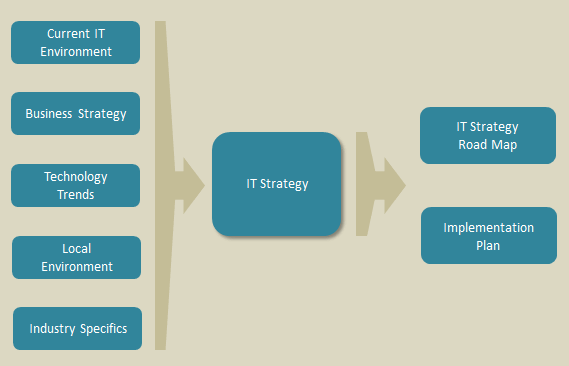Corporate IT Strategy
As corporation grows in size, so does its Information Technology (IT) infrastructure and complexity. Having an IT strategy ensures resources are properly aligned and allocated while building a sustainable and consistent growth.
Without a corporate IT strategy, it is very hard to manage enterprise IT elements, especially at domestic and international subsidiaries. As a result, costs might not be properly controlled or allocated, causing ineffective IT investments. At the same time, overlap in functionality or systems causes discrepancy across the IT environment.
An IT strategy encompasses several critical IT areas, both strategic and operational. A few examples include:
- Budget
- IT investment portfolio
- Solution delivery
- IT infrastructure
- Business process management
- Sourcing
- Capability management and development
… and many more.
A good IT strategy aligns well with business goals and objectives, and allows adjustments in the long run. The strategy, however, has to be able to accommodate business core activities and practices. The flexibility of a good IT strategy leverages the current infrastructure and expertise, hence reducing overall costs and resources needed to implement the plan.
Having an IT strategy gives the management team, current and future, the confidence needed to grow the business and take challenges in the business environment. The management would have a clear picture of how IT would serve and help them control costs and gain competitive edge.
How we do it
A typical project involves the following steps:
- Current IT environment assessment
- Understanding business strategy within the next 3-5 years
- Emerging technology trends discussion
- Understanding the specifics: local environment and industry
Drawing from above observations, Etigo proposes an overall IT strategy. Upon completion of an IT strategy, Etigo develops a road map and implementation plan.
Please contact our experts for consultancy on how to build an effective IT strategy for your organzination.

